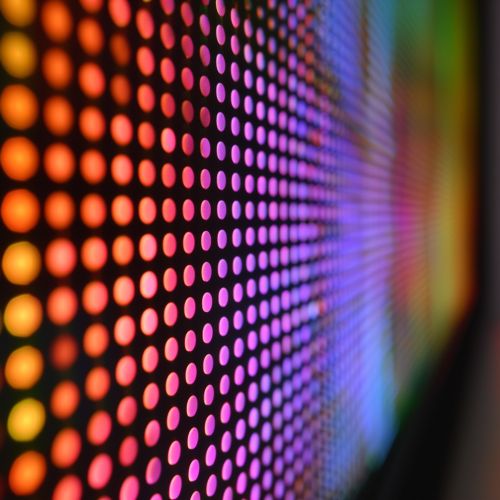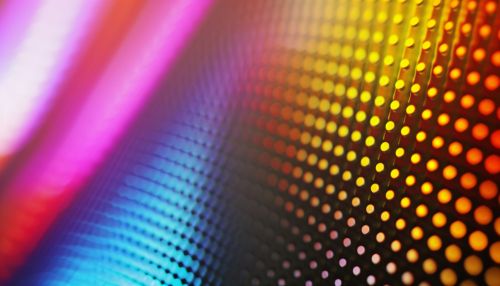Quantum Dot Color Filter
Introduction
A quantum dot color filter (QDCF) is a type of color filter used in display technologies. It utilizes quantum dots (QDs), which are nanoscale semiconductor particles, to produce pure monochromatic red, green, and blue light. The use of QDCF in display technologies offers several advantages over traditional color filters, including improved color accuracy, energy efficiency, and longevity.


Quantum Dots: The Core of QDCF
Quantum dots are tiny particles, typically between 2 and 10 nanometers in diameter. They are made from semiconductor materials, such as cadmium selenide, cadmium sulfide, or indium arsenide. When these particles are excited by light or electricity, they can emit light of various colors. The color of the light depends on the size of the quantum dots: smaller dots emit shorter wavelength (bluer) light, while larger dots emit longer wavelength (redder) light. This property of quantum dots is utilized in QDCF to produce pure monochromatic light.
Working Principle of QDCF
A quantum dot color filter works by converting the backlight produced by the display into colored light. The backlight, which is typically blue or ultraviolet light, passes through a layer of quantum dots. The quantum dots absorb the high-energy backlight and re-emit it as lower-energy colored light. The color of the light depends on the size of the quantum dots. By carefully controlling the size of the quantum dots, QDCF can produce red, green, and blue light – the primary colors needed for color displays.
Advantages of QDCF
Quantum dot color filters offer several advantages over traditional color filters. These include:
- Improved color accuracy: QDCF can produce pure red, green, and blue light, allowing for more accurate color reproduction. This is particularly beneficial for high-definition displays, where color accuracy is crucial.
- Energy efficiency: Traditional color filters work by absorbing unwanted colors of light, which wastes a significant amount of energy. In contrast, QDCF converts the backlight into colored light, which is a more energy-efficient process.
- Longevity: Quantum dots are highly resistant to heat and light, which makes them more durable than traditional color filters. This can extend the lifespan of the display.
Applications of QDCF
Quantum dot color filters are used in a variety of display technologies, including liquid crystal displays (LCDs), organic light-emitting diode (OLED) displays, and MicroLED displays. They are particularly well-suited to high-definition displays, where their ability to produce pure red, green, and blue light can enhance color accuracy and image quality.
Future Developments
While QDCF technology is already used in some high-end displays, ongoing research and development aims to further improve the performance and reduce the cost of QDCF. This includes efforts to develop quantum dots that can be excited by lower-energy light, which would further improve the energy efficiency of QDCF. Additionally, researchers are exploring ways to produce quantum dots from less toxic materials, which would make QDCF more environmentally friendly.
